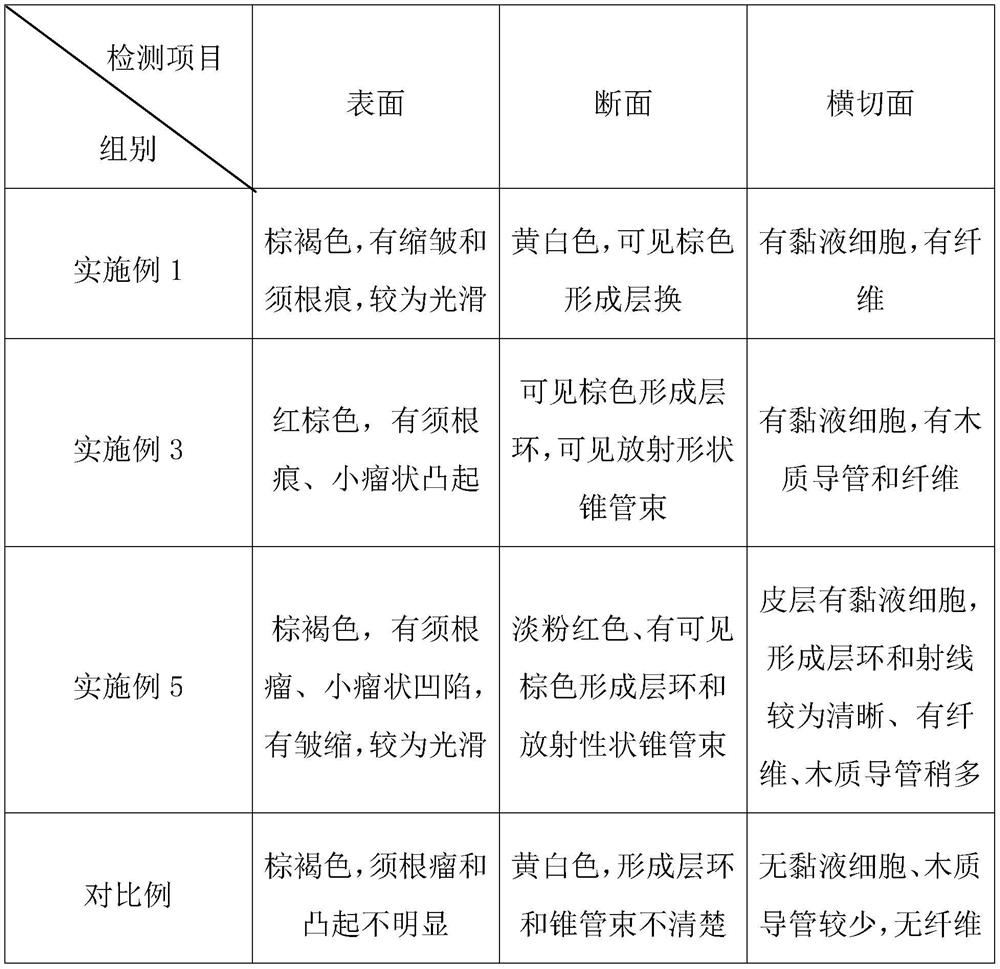Bagging type cultivation method of tetrastigma hemsleyanum in camellia oleifera forests
A technology of bag cultivation and clover, applied in the field of cultivation, can solve problems such as shortage of supply, scarcity of clover resources, destruction, etc.
- Summary
- Abstract
- Description
- Claims
- Application Information
AI Technical Summary
Problems solved by technology
Method used
Image
Examples
Embodiment 1
[0025] The present embodiment provides a bag-type cultivation method of Camellia oleifera Clover, the cultivation method steps are as follows:
[0026] Stir the planting soil with organic fertilizer and mixed organic base fertilizer for 10 minutes and pack it into bags. After filling the non-woven bags, put them side by side in groups of 2 bags to the Camellia oleifera forest. Plant 2 plants in each bag. After the surrounding soil is compacted, pour root water, and then use the surface soil of the Camellia oleifera forest land to cultivate 10cm of soil. In the first year, artificial weeding is performed 3 times a year. After 1 year, artificial weeding is performed 3 times a year, and fertilization is applied 4 times a year. When the vines grow to 25cm, insert high The 80cm bamboo branches guide the vines to the scaffolding. After 3 years of cultivation, they are excavated, and the underground tubers in the non-woven bag can be taken. Wherein, the gap between the 2 bags of each...
Embodiment 2
[0028] The present embodiment provides a bag-type cultivation method of Camellia oleifera Clover, the cultivation method steps are as follows:
[0029] Stir the planting soil with organic fertilizer and mixed organic base fertilizer for 50 minutes and pack it into bags. After filling the non-woven bags, put them side by side in groups of 2 bags to the Camellia oleifera forest, plant 3 plants in each bag, and put the seedlings After the surrounding soil is compacted, pour root water, and then use the surface soil of the camellia oleifera forest to cultivate 15cm of soil, manually weeding 5 times in the first year, 6 times a year after 1 year, and fertilizing 3 times a year. When the vines grow to 30cm, insert high The 120cm bamboo branches lead the vines to the scaffolding, excavate after 5 years of cultivation, and take the underground tubers in the non-woven bag. Wherein, the gap between the 2 bags of each group is 5 cm, the foliar fertilizer is sprayed once, and the topdress...
Embodiment 3
[0031] The present embodiment provides a bag-type cultivation method of Camellia oleifera Clover, the cultivation method steps are as follows:
[0032] Stir the planting soil with organic fertilizer and mixed organic base fertilizer for 40 minutes and pack it into bags. After filling the non-woven bags, put them side by side in groups of 2 bags to the Camellia oleifera forest, plant 3 plants in each bag, and put the seedlings After the surrounding soil is compacted, pour root water, and then use Camellia oleifera forest land surface soil to cultivate 12cm of soil, weeding 4 times in the first year, 4 times a year after 1 year, and fertilizing 3 times a year. When the vines grow to 28cm, insert high The 100cm bamboo branches lead the vines to the scaffolding, excavate after 4 years of cultivation, and take the underground tubers in the non-woven bag. Wherein, the gap between the 2 bags of each group is 4cm, the foliar fertilizer is sprayed twice, and the topdressing fertilizer ...
PUM
 Login to View More
Login to View More Abstract
Description
Claims
Application Information
 Login to View More
Login to View More - R&D
- Intellectual Property
- Life Sciences
- Materials
- Tech Scout
- Unparalleled Data Quality
- Higher Quality Content
- 60% Fewer Hallucinations
Browse by: Latest US Patents, China's latest patents, Technical Efficacy Thesaurus, Application Domain, Technology Topic, Popular Technical Reports.
© 2025 PatSnap. All rights reserved.Legal|Privacy policy|Modern Slavery Act Transparency Statement|Sitemap|About US| Contact US: help@patsnap.com

